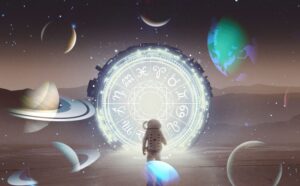A truly peculiar cosmic discovery—Hanny’s Voorwerp: The name itself sounds strange, and the phenomenon it describes is just as unusual. Scientifically, it is known as a “quasar light echo,” but to truly understand what this means, we need to start from the beginning.
It all began with Galaxy Zoo, a citizen science project where professional scientists collaborated with thousands of volunteers worldwide. The project aimed to classify galaxies using images from the Sloan Digital Sky Survey. In 2007, astronomers at the University of Oxford faced a challenge—they had a vast dataset of nearly 900,000 galaxy images that needed classification. Computers weren’t efficient enough at distinguishing between elliptical and spiral galaxies, and manually analyzing each image would take months.
Instead of relying solely on professionals, the team launched Galaxy Zoo, inviting the public to participate. The response was overwhelming—within 24 hours, volunteers were classifying galaxies at a rate of 70,000 per hour. After six months, each galaxy in the catalog had been analyzed and verified an average of 38 times.
The Discovery of Hanny’s Voorwerp
Among the many volunteers participating in the project was a Dutch schoolteacher named Hanny van Arkel. While analyzing an image of a spiral galaxy labeled IC 2497, she noticed something peculiar—a bright green, cloud-like object below the galaxy. Green is an unusual color in astronomical images since most celestial objects emit red, blue, yellow, or white light. Natural green emissions are typically caused by ionized gas, such as the oxygen responsible for Earth’s auroras.
Hanny marked the object for further investigation, and astronomers soon realized they had discovered something entirely new. The mysterious green structure, now named “Hanny’s Voorwerp” (Dutch for “Hanny’s Object”), turned out to be the glowing remnants of a quasar—a once-active galactic nucleus powered by a supermassive black hole.
A Glimpse into the Cosmic Past
IC 2497, the spiral galaxy next to Hanny’s Voorwerp, had once been home to an extremely bright quasar. However, the quasar had since faded, leaving behind only the light it emitted long ago. The green glow of Hanny’s Voorwerp is a “light echo,” revealing an event that occurred nearly 100,000 years prior.
At some point in the past, a massive amount of interstellar gas had been pulled toward the black hole at the center of IC 2497. The gas became superheated and emitted intense radiation, creating a quasar. This high-energy radiation illuminated a cloud of gas expelled from the galaxy, causing it to glow green. However, by the time Hanny and astronomers observed the galaxy, the quasar itself had already gone dormant.
Additionally, remnants of the quasar’s energy interacted with the gas in Hanny’s Voorwerp, triggering star formation. Later images from the Hubble Space Telescope confirmed the presence of newly formed stars within the object.
A Groundbreaking Discovery
The discovery of Hanny’s Voorwerp proved that quasars can “switch off” relatively quickly in cosmic terms and that their effects can still be observed long after their light has faded. Encouraged by this finding, astronomers have since identified similar objects near other galaxies, further expanding our understanding of these rare cosmic echoes.
What makes this discovery even more remarkable is that it came from the keen observation of a schoolteacher participating in a citizen science project. It serves as a testament to the power of collaboration between professional astronomers and the public.
For those inspired by Hanny’s discovery, projects like Galaxy Zoo continue to welcome new volunteers, offering opportunities for anyone to contribute to scientific research—and maybe even make the next big cosmic discovery.






